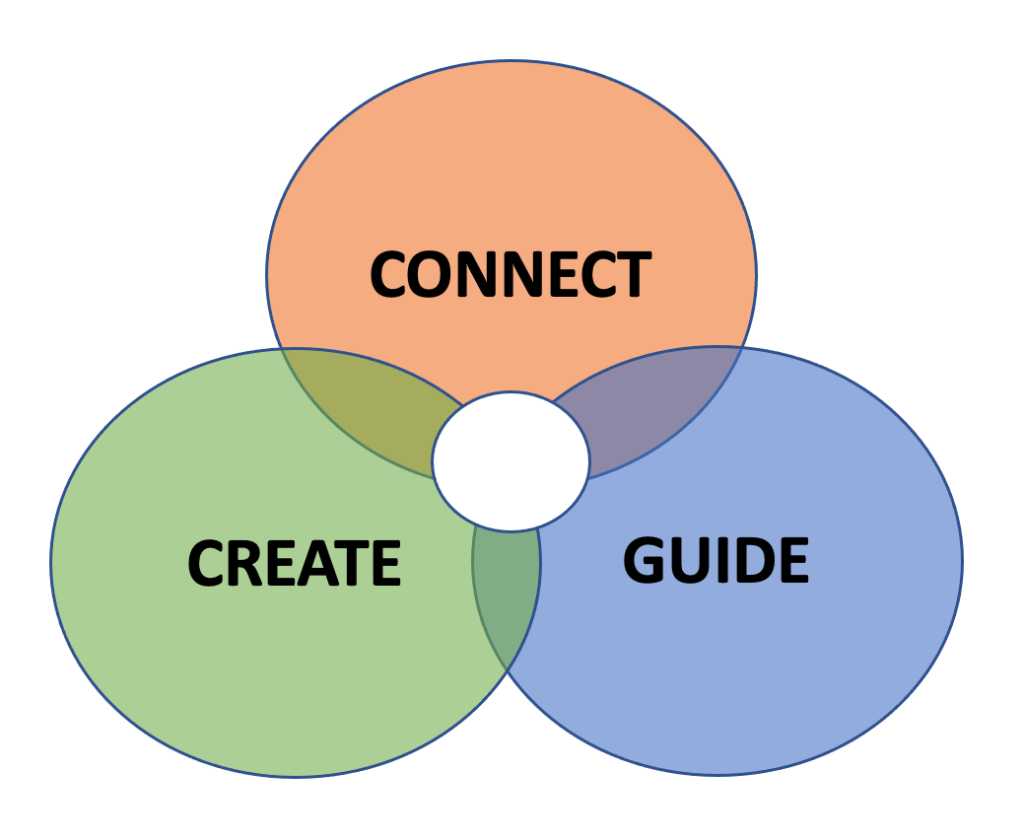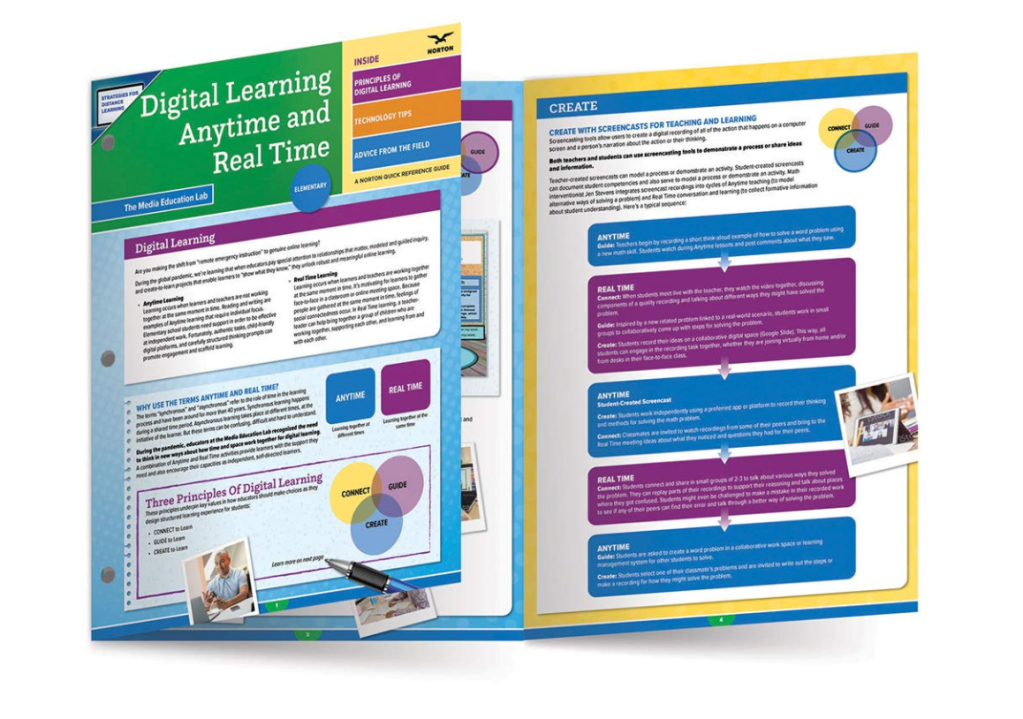Virtually Viral Hangouts is an online community that was established on March 16, 2020, when the coronavirus pandemic created a condition of social isolation. For one hour every day (Monday thru Friday), anyone could stop in to the Zoom meeting and meet new friends through a structured program of social interaction.
During the pandemic, educators learned to develop alternative ways of getting to know learners, creating conditions for respect and trust to develop. At the Media Education Lab, we developed routines for Anytime and Real-Time learning that build upon a model that emphasizes three elements:

Connect to Learn: Strategies that promote social interaction and build trust and respect
Create to Learn: Compose a variety of forms of media, individually and collaboratively, to gain confidence in self expression and advocacy.
Guide to Learn: Use the process of inquiry learning to identify productive questions and discover and generate ideas through viewing, reading, listening and encountering new ideas and diverse points of view.
In this VVH at #NAMLE21 session, we begin with a socio-emotional check-in activity from the Best Online Meetings guide that was created by the participants of Virtually Viral Hangouts as a culminating activity in June of 2020.
Then we offer 2 rounds of the Fast Friends Protocol, modified especially for #NAMLE21 participants.
Protocol Rules
Each participant freely chooses a question they would like to answer.
One at a time, participants alternate between speaking and listening roles.
Don’t get sidetracked into non-profocol conversation. Follow the path.
ROUND ONE
- What do you remember about when you first encountered the term “media literacy”?
- When you were growing up, what was the first memory you have of making some form of media?
- Were your parents or family members media literate? Why or why not?
- What’s one example of media that you have a passionate love for?
- What’s one example of media that you have a passionate loathing for?
- Do you consider yourself a leader in media literacy? Why or why not?
- What’s a book, movie, song or video game that really made a deep impact on you?
ROUND TWO
- Given the choice of anyone in the world, whom would you want as a dinner guest?
- Would you like to be famous? In what way?
- Before making a telephone call, do you ever rehearse what you are going to say? Why?
- What would constitute a “perfect” day for you?
- When did you last sing to yourself? To someone else?
- If you were able to live to the age of 90 and retain either the mind or body of a 30-year-old for the last 60 years of your life, which would you want?
- Do you have a secret hunch about how you will die?
- Name three things you and your partner appear to have in common.
- For what in your life do you feel most grateful?
- If you could change anything about the way you were raised, what would it be?
- Take four minutes and tell your partner your life story in as much detail as possible.
- If you could wake up tomorrow having gained any one quality or ability, what would it be?
Education activist Kristin Ziemke is fond of saying that before you can teach someone, you must know 10 things about them. Use the Fast Friends Protocol to get to know your students —and your colleagues. Through Connecting to Learn, you can build trust and respect that are important foundations for participating in democratic life.
Learn More about Anytime & Real Time Learning from the Media Education Lab

Use this 6-page Quick Resource Guide to introduce your school community to the digital learning practices we modeled at the Summer Institute in Digital Literacy. It’s the perfect resource for a staff development program!
Created by Renee Hobbs, Julie Coiro, and Yonty Friesem, these 3 guides (elementary, middle school, and high school) feature some of the most robust instructional practices developed by the participants of the Summer Institute in Digital Literacy.
Since the start of the pandemic, educators all over the world have been learning on the fly how to use the power of digital texts, tools, and technologies for “remote emergency instruction.” As teachers quickly discovered, conducting nearly nonstop Zoom meetings, in an effort to replicate in-classroom learning in an online environment, is both ineffective and exhausting.
In this series of three guides, we introduce central principles to guide instructional planning for real time (synchronous) and anytime (asynchronous) learning. Each guide unpacks the application of these principles―to connect, guide, and create―with specific lesson examples and technology tips tailored to one level of schooling: elementary, middle, or high school.
FAST FRIENDS PROTOCOL SOURCE: 36 Questions for Increasing Closeness
Comments(0)